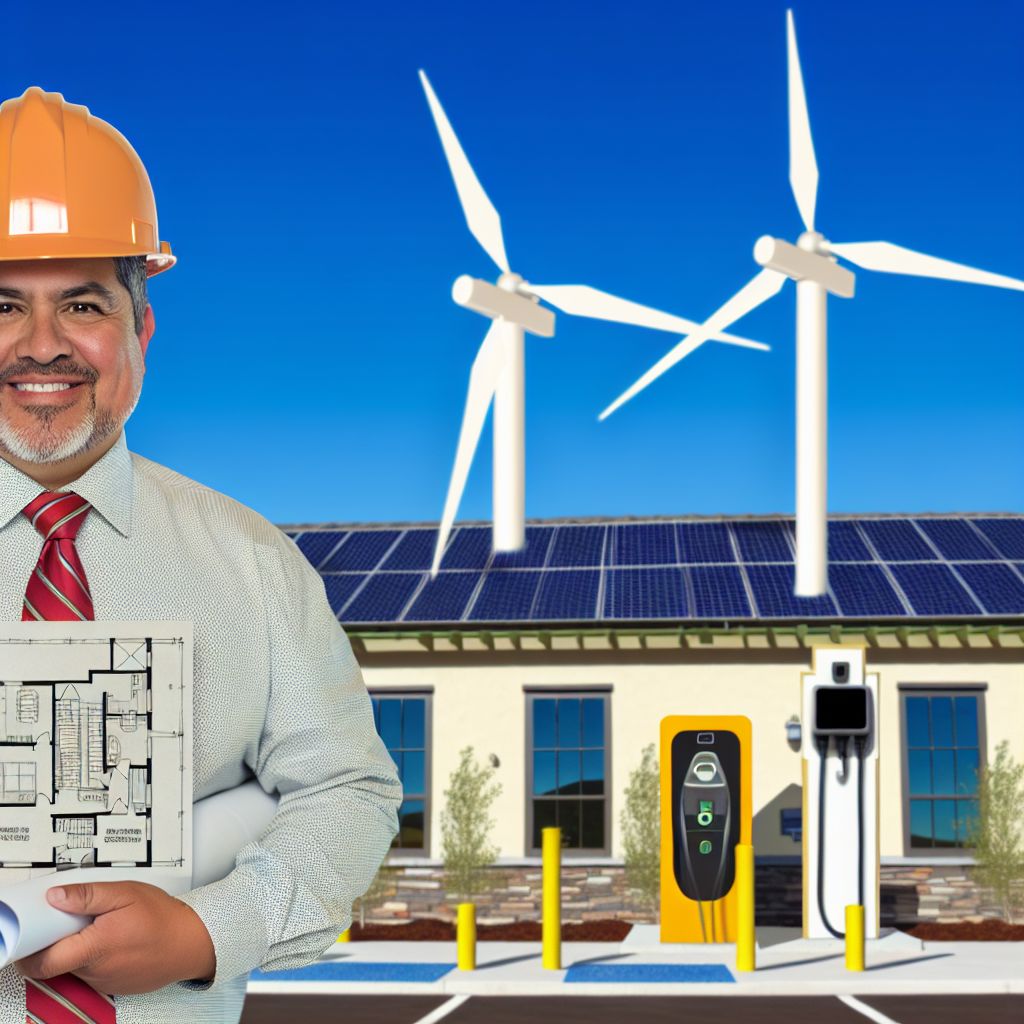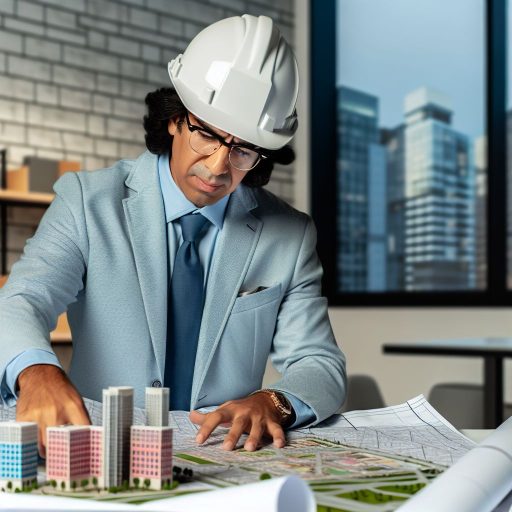Introduction to Energy Efficiency Technologies in Commercial Real Estate
Importance of Energy Efficiency
Energy efficiency plays a crucial role in commercial real estate.
It reduces operational costs and enhances building performance.
Moreover, it contributes to environmental sustainability.
Property owners benefit from energy-efficient technologies.
These technologies lower energy consumption and minimize waste.
Overview of Energy Efficiency Technologies
Several technologies improve energy efficiency in commercial buildings.
These include smart HVAC systems and energy management software.
Lighting solutions also have a significant impact.
LED lighting reduces energy consumption compared to traditional bulbs.
Furthermore, renewable energy sources support sustainability efforts.
Smart Technologies in Building Management
Smart technologies optimize energy usage through automation.
Building management systems monitor various energy levels.
Real-time data helps identify areas for improvement.
These systems can adjust energy consumption accordingly.
As a result, they enhance overall efficiency and reduce costs.
Renewable Energy Integration
Integrating renewable energy sources is vital for energy efficiency.
Solar panels and wind turbines harness clean energy for buildings.
This reduces reliance on nonrenewable energy sources.
Additionally, it supports corporate sustainability goals.
Renewable energy projects often qualify for financial incentives.
Building Envelope Improvements
Enhancing the building envelope increases energy efficiency.
Insulation and window upgrades play key roles in this process.
High-performance windows reduce heat gain and loss.
Proper insulation minimizes energy needs for heating and cooling.
These improvements create a more comfortable indoor environment.
Benefits of Energy Efficiency Technologies
Implementing energy efficiency technologies offers numerous advantages.
First, it leads to significant cost savings over time.
Second, it improves tenant satisfaction and comfort levels.
Third, it enhances the overall value of commercial properties.
Additionally, energy-efficient buildings often attract eco-minded tenants.
Benefits of Implementing Energy Efficiency Solutions
Cost Savings for Property Owners
Implementing energy efficiency solutions significantly reduces operational costs.
These solutions lower utility bills by minimizing wasteful energy consumption.
Moreover, energy-efficient upgrades often qualify for tax credits and rebates.
This creates substantial savings in both the short and long term.
Increased Property Value
Energy-efficient buildings tend to attract higher rental rates.
Investors consistently prefer properties with lower energy expenses.
A comprehensive energy management plan can enhance marketability.
This ultimately leads to increased property value over time.
Improved Tenant Comfort
Energy efficiency measures enhance indoor air quality and comfort levels.
Tenants appreciate improved lighting and temperature control.
This can lead to higher tenant satisfaction and retention rates.
A comfortable environment fosters productivity among occupants.
Environmental Impact
Implementing energy efficiency reduces carbon footprints significantly.
These measures contribute to a more sustainable future.
Furthermore, they align with global initiatives to combat climate change.
Property owners play a critical role in promoting environmental responsibility.
Regulatory Compliance
Many cities and states enforce energy efficiency regulations.
Adopting energy-efficient practices helps meet these legal standards.
This can prevent costly fines and improve compliance scores.
Staying ahead of regulations fosters a positive public image.
Access to Incentives and Financing
Many programs offer financial incentives for energy improvements.
These can ease the initial investment burden on property owners.
Accessing low-interest financing for upgrades is also advantageous.
This facilitates wider implementation of energy-efficient solutions.
Overview of Common Energy Efficiency Technologies
Building Automation Systems
Building automation systems manage various building operations effectively.
They control heating, ventilation, air conditioning, lighting, and security.
Consequently, these systems reduce energy use and operational costs.
Moreover, they enhance occupant comfort and productivity.
Energy-Efficient HVAC Systems
Energy-efficient HVAC systems consume less energy than standard units.
They incorporate advanced technologies such as variable-speed drives and smart thermostats.
Additionally, these systems optimize airflow and humidity control.
This leads to significant energy savings and lower utility bills.
LED Lighting
Swapping traditional lighting with LED options dramatically reduces energy consumption.
LEDs last significantly longer than incandescent or fluorescent bulbs.
Furthermore, they produce less heat, minimizing cooling costs.
In essence, LED lighting provides both economic and environmental benefits.
Insulation and Weatherization
Proper insulation and weatherization enhance a building’s energy efficiency.
They prevent heat loss during winter and maintain cool air in summer.
This reduces the workload on HVAC systems, saving energy and money.
Moreover, these improvements improve indoor air quality and comfort.
Renewable Energy Sources
Integrating renewable energy sources promotes long-term sustainability in commercial real estate.
Solar panels, wind turbines, and geothermal systems offer clean energy options.
Businesses can significantly lower their carbon footprints using these technologies.
Additionally, they may qualify for tax incentives and rebates.
Energy Management Software
Energy management software enables businesses to monitor and analyze energy usage.
This helps identify inefficiencies and opportunities for improvement.
Such software provides actionable insights for informed decision-making.
As a result, companies can implement strategies to enhance energy efficiency.
Gain More Insights: Land Development for Public-Private Partnerships
Building Automation Systems: Enhancing Control and Monitoring
Introduction to Building Automation
Building automation systems streamline facility operations.
They integrate various building functions into a unified interface.
Consequently, owners enjoy enhanced control over energy consumption.
Key Components of Building Automation Systems
Understanding the components enriches the automation experience.
- Sensors monitor environmental conditions.
- Controllers manage heating, ventilation, and air conditioning.
- Software interfaces allow users to access system data easily.
Benefits of Implementing Building Automation
Implementing these systems leads to significant cost savings.
For instance, they reduce energy waste through optimized performance.
Moreover, these systems improve occupant comfort and productivity.
As a result, buildings become more attractive to tenants.
Real-World Applications
Many commercial properties already use advanced building automation.
For example, GreenTech Plaza leverages this technology effectively.
The system adjusts lighting and temperature based on occupancy.
This approach minimizes energy use while ensuring comfort.
Future Trends in Building Automation
Future advancements will likely incorporate artificial intelligence.
AI-driven systems can predict maintenance needs automatically.
Additionally, the Internet of Things (IoT) will play a pivotal role.
IoT connectivity enhances real-time monitoring capabilities.
Integrating Building Automation for Modern Needs
Integrating building automation systems proves essential for modern commercial real estate.
Such advancements not only enhance operational efficiency but also provide sustainability benefits.
Investing in these technologies positions owners for success in a competitive market.
Find Out More: How Smart Contracts Are Improving Commercial Real Estate Deals
LED Lighting and its Impact on Energy Consumption
Understanding LED Technology
LED stands for light-emitting diode.
This technology offers significant advantages over traditional bulbs.
LEDs are more energy-efficient and have a longer lifespan.
Consequently, they require less frequent replacements.
Energy Efficiency of LED Lights
LED lighting can use up to 75% less energy than incandescent lights.
This reduces overall energy consumption in commercial spaces.
Furthermore, LEDs produce less heat during operation.
This characteristic decreases the need for air conditioning, leading to more savings.
Cost Savings for Property Owners
Switching to LED technology can introduce substantial cost savings.
Lower energy bills are a direct benefit of efficient lighting.
Additionally, reduced maintenance costs occur due to fewer replacements.
These factors contribute to a quicker return on investment.
Environmental Impact
LED lights significantly reduce carbon footprints.
They contribute to lower greenhouse gas emissions.
By using less electricity, they depend on fewer fossil fuels.
This transition supports sustainability practices in real estate management.
Considerations for Implementation
Real estate owners should assess their current lighting systems.
A comprehensive energy audit can highlight inefficiencies.
Furthermore, finding qualified contractors for installation is crucial.
Proper installations maximize the benefits of LED technology.
Future Directions in LED Technology
LED technology will continue to advance in efficiency and affordability.
Innovations will likely create even more sustainable options.
Commercial real estate owners should stay informed about these developments.
In doing so, they can maintain their competitive edge in the market.
Explore Further: Understanding Operating Expenses for Hospitality Properties in Real Estate
HVAC Optimization Techniques for Improved Efficiency
Understanding HVAC Systems
HVAC systems regulate indoor climate and air quality.
Understanding their functions is crucial for optimization.
These systems include heating, ventilation, and air conditioning components.
Regular Maintenance Practices
Regular maintenance significantly enhances system efficiency.
Technicians should inspect HVAC systems at least twice a year.
This check-up includes changing filters and cleaning coils.
Additionally, lubricating moving parts reduces wear and tear.
Smart Thermostats and Controls
Smart thermostats can learn your schedule and preferences.
They automatically adjust temperature settings for efficiency.
These devices also allow remote control via smart devices.
Consequently, they help save energy when spaces are unoccupied.
Energy Recovery Ventilation Systems
Energy recovery ventilation (ERV) systems minimize energy loss.
They transfer energy between incoming and outgoing air streams.
This process maintains air quality while reducing heating and cooling loads.
Implementing ERV systems leads to significant energy savings.
Variable Speed Drives
Variable speed drives (VSDs) adjust fan and pump speeds based on demand.
This technology ensures optimal system performance.
Consequently, it reduces energy consumption during low-demand periods.
Utilizing Renewable Energy Sources
Integrating renewable energy sources enhances HVAC efficiency.
Solar panels can power HVAC systems during peak sunlight hours.
Additionally, geothermal systems utilize stable ground temperatures.
These systems provide significant cost savings over time.
Data Analytics and Monitoring
Data analytics tools help monitor HVAC performance continuously.
Real-time data allows for quick detection of inefficiencies.
Using analytics, property owners can make informed adjustments.
This proactive approach minimizes downtime and repair costs.
Uncover the Details: Benefits of Green Roofs for Commercial Real Estate Sustainability

Renewable Energy Systems: Integrating Solar and Wind Solutions
Understanding Renewable Energy Integration
Integrating renewable energy into commercial real estate is essential for sustainability.
Solar and wind solutions provide clean energy alternatives.
Moreover, they reduce reliance on fossil fuels.
This integration supports corporate social responsibility initiatives.
Solar Energy Systems
Solar panels convert sunlight into usable electricity.
They offer advantages in terms of efficiency and cost savings.
Installing solar panels enhances property value.
Additionally, solar incentives reduce initial investment costs.
Types of Solar Technologies
- Photovoltaic (PV) panels generate electricity directly from sunlight.
- Concentrated Solar Power (CSP) systems use mirrors to focus sunlight.
- Building-Integrated Photovoltaics (BIPV) blend with building materials.
Wind Energy Solutions
Wind energy uses turbines to generate electricity harnessing air currents.
This approach is increasingly viable for urban environments.
Small-scale wind turbines can supplement building energy needs.
Wind energy reduces carbon footprints and operational expenses.
Choosing the Right Wind Technology
- Horizontal-axis wind turbines are the most common type.
- Vertical-axis wind turbines suit urban settings more effectively.
- Offshore wind farms can supply large energy amounts to nearby facilities.
Combining Solar and Wind Technologies
Using solar and wind solutions together maximizes energy efficiency.
Both systems complement each other, especially during different weather conditions.
This synergy leads to consistent energy generation throughout the year.
Moreover, it enhances grid resilience, making properties less vulnerable.
Implementing Renewable Energy Systems
Identification of suitable locations for installations is crucial.
Analyzing energy needs and usage patterns informs effective planning.
Partnerships with experienced renewable energy providers ensure successful integration.
Tax incentives and rebates can assist with financial feasibility.
Energy Audits: Identifying Opportunities for Efficiency Improvements
The Importance of Energy Audits
Energy audits serve as a foundational step in enhancing efficiency.
They help identify areas where energy is wasted.
Additionally, audits reveal potential upgrades and replacements.
Property owners benefit from understanding their unique energy usage patterns.
Types of Energy Audits
There are various types of energy audits available.
Preliminary audits provide a basic overview of energy consumption.
Detailed audits dive deeper into specific systems and components.
Operational audits assess the current operational practices of the facility.
Investigation audits focus on specific issues identified in previous audits.
Steps in Conducting an Energy Audit
Effective energy audits follow established methodologies.
Firstly, gather and review historical utility data.
Next, conduct a walkthrough of the property to assess its condition.
Then, analyze the information collected to identify inefficiencies.
Lastly, create a comprehensive report outlining findings and recommendations.
Identifying Key Areas for Improvement
During an energy audit, prioritize certain key systems for analysis.
- Lighting systems often present significant efficiency opportunities.
- Heating, ventilation, and air conditioning (HVAC) systems require detailed evaluation.
- Insulation quality impacts energy performance considerably.
- Appliance and equipment efficiency ratings should be assessed.
The Benefits of Implementing Recommendations
Implementing audit recommendations leads to substantial benefits.
Property owners often see reduced energy costs.
Improved comfort levels enhance tenant satisfaction and retention.
Additionally, increased energy efficiency supports sustainability goals.
Finally, a commitment to efficiency can enhance property value.
Government Incentives and Rebates for Energy Efficient Upgrades
Understanding Available Programs
Government incentives promote energy efficiency in commercial real estate.
These programs often include financial rebates and tax credits.
Both federal and local governments offer various options.
For instance, the Federal Energy Management Program provides resources specifically for commercial entities.
Likewise, many states offer utility rebate programs to encourage upgrades.
Types of Incentives
Incentives come in different forms, including grants and tax deductions.
Certain programs provide upfront cash rebates for energy-efficient equipment.
Additionally, tax credits reduce overall tax liability for eligible improvements.
Some initiatives even offer financing options for extensive retrofits.
Eligibility Criteria
Eligibility for these incentives varies across programs.
Typically, buildings must meet specific energy performance standards.
Moreover, certain technologies often qualify for incentives.
Energy-efficient lighting, HVAC systems, and insulation upgrades are common examples.
How to Apply for Incentives
Applying for government incentives requires careful planning.
Businesses should first review all available programs in their area.
Next, gather necessary documentation for the application process.
Many programs have specific forms or applications to fulfill.
Lastly, submit applications before the deadline to secure funding.
Potential Financial Benefits
Taking advantage of these incentives significantly reduces project costs.
In some cases, businesses can recover a large percentage of their investment.
Furthermore, energy-efficient upgrades lower ongoing operational costs.
This results in increased profitability for real estate owners over time.
Staying Informed
Staying updated on incentives can benefit commercial real estate owners.
Programs may change frequently based on policy shifts.
Owners should regularly consult government websites and industry publications.
Joining local trade organizations can also provide valuable insights.
Case Studies: Successful Implementations of Energy Efficiency Technologies in Commercial Properties
Introduction to Case Studies
This section highlights successful energy efficiency technologies in commercial real estate.
These case studies demonstrate the effectiveness of innovative solutions.
We will explore diverse technologies and their impact on energy consumption.
Case Study: Green Tower Properties
Green Tower Properties implemented smart building technology in 2022.
This technology allowed real-time monitoring of energy usage.
Consequently, they reduced energy consumption by 25% within a year.
Additionally, the installation of energy-efficient HVAC systems contributed significantly.
These systems improved indoor air quality while lowering costs.
Key Technologies Used
- Smart building management systems
- LED lighting upgrades
- Energy-efficient insulation materials
Case Study: Urban Eco Center
The Urban Eco Center focused on renewable energy solutions in 2021.
They installed solar panels on the rooftop.
This initiative covered 40% of the building’s energy needs.
Moreover, they adopted rainwater harvesting techniques.
These measures further reduced the overall environmental impact.
Technological Innovations
- Solar photovoltaic systems
- Rainwater collection systems
- Energy-efficient appliances
Case Study: Lakeview Office Complex
Lakeview Office Complex upgraded to energy-efficient windows in 2020.
This upgrade minimized heat loss significantly.
As a result, energy savings reached about 30% per year.
They also integrated motion sensor lighting in common areas.
This further optimized energy usage during off-peak hours.
Summary of Implemented Solutions
- High-performance windows
- Motion-activated lighting systems
- Advanced thermostat controls
Impact of Energy Efficiency Technologies
The successful examples above illustrate the impact of energy efficiency technologies.
Commercial real estate owners can achieve substantial energy savings.
Moreover, these initiatives improve building sustainability and tenant satisfaction.
Adopting similar strategies can benefit more properties in the future.
Additional Resources
DOE Releases Report Showing Tremendous Energy Efficiency …




